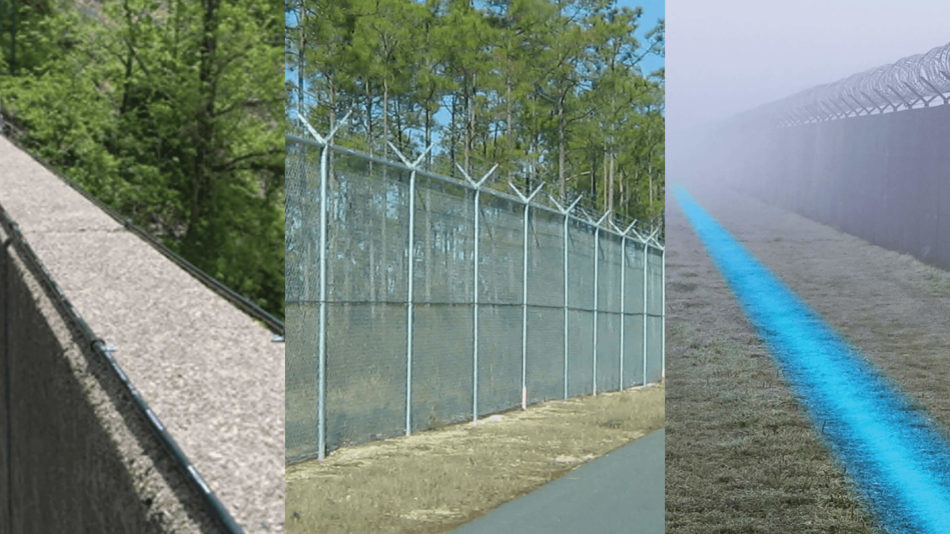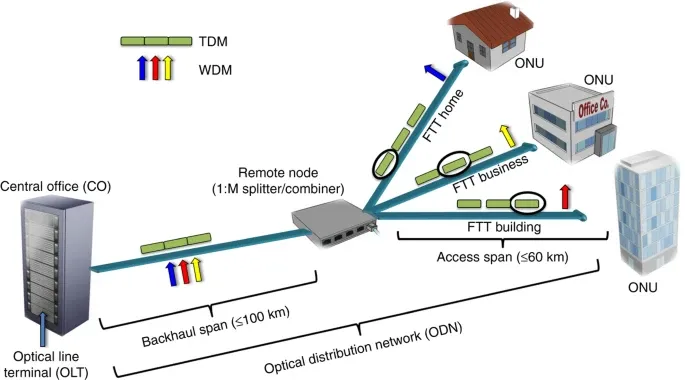Why a Fiber Optic Security System Is Important for Sensitive Facilities and Environments
Why a Fiber Optic Security System Is Important for Sensitive Facilities and Environments
Blog Article
Why Fiber Optic Safety Equipments Are the Future of Security
The change to fiber optic protection systems notes a considerable innovation in the realm of protection, driven by their remarkable information transmission capacities and strength to outside disturbances. As the landscape of safety progresses along with arising technologies such as AI and IoT, the potential for fiber optics to boost and redefine safety frameworks ends up being progressively evident.
Advantages of Fiber Optic Equipments
Among the main advantages of fiber optic systems is their exceptional bandwidth capacity, which promotes the transmission of large volumes of information over long distances without considerable loss. This characteristic is particularly helpful for safety and security applications that call for the continuous surveillance and transfer of high-def video feeds, sensor data, and other critical details. Optical fiber can accommodate the growing demands of modern security systems, making sure that data continues to be undamaged and trustworthy.
In addition, fiber optic cable televisions are much less vulnerable to electro-magnetic interference, which can be a considerable issue in environments with different electronic gadgets. This resistance enhances the honesty of the information being transferred, therefore lessening the risk of information breaches or system failures. Fiber optic systems are inherently extra safe and secure than typical copper cables, as touching into a fiber optic line without discovery is exceptionally difficult.
The longevity of fiber optic wires additionally contributes to their charm. They are resistant to ecological factors such as wetness and temperature level variations, decreasing maintenance costs and increasing system long life. Overall, these advantages position fiber optic systems as a robust and effective choice for contemporary security frameworks, guaranteeing trustworthy and safe and secure information transmission.
Improved Information Transmission Speed

The capability to transmit large amounts of information promptly promotes the seamless integration of high-def video feeds and advanced analytics. Security systems can now refine and analyze information in real-time, improving action times and situational recognition. Furthermore, fiber optic connections support longer transmission distances without degradation of signal top quality, making them ideal for extensive safety networks.
The increased speed of fiber optic systems not just enhances the efficiency of safety and security operations but likewise decreases latency. This is particularly vital in critical scenarios where prompt decision-making can protect against protection violations or reduce possible hazards. As organizations remain to prioritize safety and security and effectiveness, the demand for rapid and reputable information transmission will most certainly strengthen fiber optic systems as a foundation of modern-day safety facilities.
Resistance to Interference
Fiber optic security systems consistently show extraordinary resistance to electro-magnetic interference, a crucial advantage in atmospheres susceptible to electronic sound. Unlike conventional copper wires, which can be negatively impacted by magnetic fields, radio regularity interference, and various other kinds of electric disturbance, fiber optic cords utilize light to transfer information. This intrinsic residential or commercial property makes certain that the signals stay clear and unaltered, despite surrounding digital activity.
Using glass or plastic fibers in fiber optic technology develops a barrier versus disturbance, permitting reputable data transmission even in difficult scenarios such as industrial centers, urban areas with high electronic traffic, or areas near radio towers. This particular considerably lowers the possibility of signal destruction or loss, making fiber optic systems particularly ideal for safety and security applications where stability and accuracy of information are extremely important.
Moreover, this resistance to interference improves the total efficiency and Visit Website reliability of safety and security systems, guaranteeing that surveillance and sharp systems work effortlessly. In a globe where protection is significantly intimidated by advanced technologies, the resilience of fiber optic systems stands apart as a critical feature, next reinforcing their standing as a vital part of modern security infrastructure.
Cost-Effectiveness In Time
Substantial expense financial savings can be accomplished in time with the execution of fiber optic security systems. While the first investment may seem greater compared to conventional copper-based systems, the long-lasting monetary benefits become apparent via decreased operational and maintenance prices (fiber security). Fiber optic wires are naturally more resilient and less susceptible to ecological elements, which translates to lower replacement and repair expenditures over their lifespan
Moreover, fiber optic systems call for less power to operate, which further decreases power prices. Boosted data transmission capabilities permit less repeaters and amplifiers, reducing devices investment and simplifying setup processes. The scalability of these systems also adds to cost-effectiveness, as organizations can increase their safety infrastructure without incurring considerable added expenses.
Another factor to take into consideration is the enhanced efficiency in monitoring and response abilities that optical fiber give. Improved real-time data transmission can bring about quicker event action times, potentially mitigating losses and responsibilities connected with security violations. In sum, the long-lasting benefits of fiber optic safety systems not only warrant the preliminary expenditure but additionally place them as a financially sensible option for companies seeking robust defense remedies.

Future Innovations in Safety
Progressing technologies are established to revolutionize safety and security systems, incorporating fabricated intelligence (AI) and artificial intelligence to boost risk detection and response abilities. These advancements will certainly enable safety systems to evaluate vast quantities of information in real-time, identifying patterns and abnormalities you could look here that show potential hazards. This positive method will make it possible for faster decision-making and a lot more reliable incident feedbacks.
In addition, the incorporation of the Net of Things (IoT) is leading the way for interconnected protection tools, supplying comprehensive surveillance and tracking. Smart sensing units can pass on details concerning ecological changes, while automated notifies can alert security employees immediately of dubious tasks.
In addition, the evolution of biometric technologies will certainly further boost security devices. Face recognition, fingerprint scanning, and retina recognition are becoming much more advanced, providing layers of verification that are hard to bypass.
Verdict
In conclusion, fiber optic security systems stand for a substantial improvement in security innovation, supplying exceptional information transmission rate, resistance to electromagnetic interference, and long-lasting cost-effectiveness. As the need for sophisticated security services remains to grow, the integration of fiber optics with arising technologies such as AI, IoT, and biometrics will certainly even more enhance protection infrastructures (fiber security). The mix of these developments will certainly guarantee a much more secure and receptive atmosphere, solidifying fiber optics as a keystone of future protection systems
Report this page